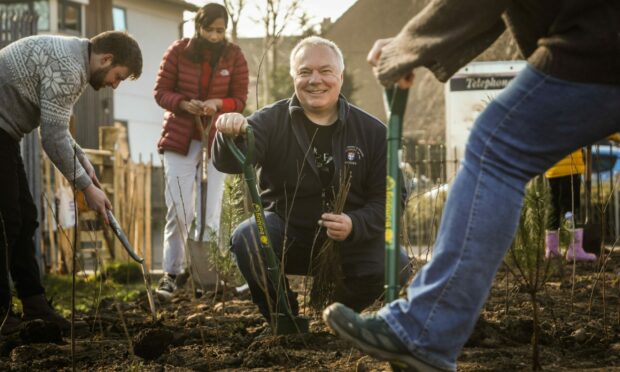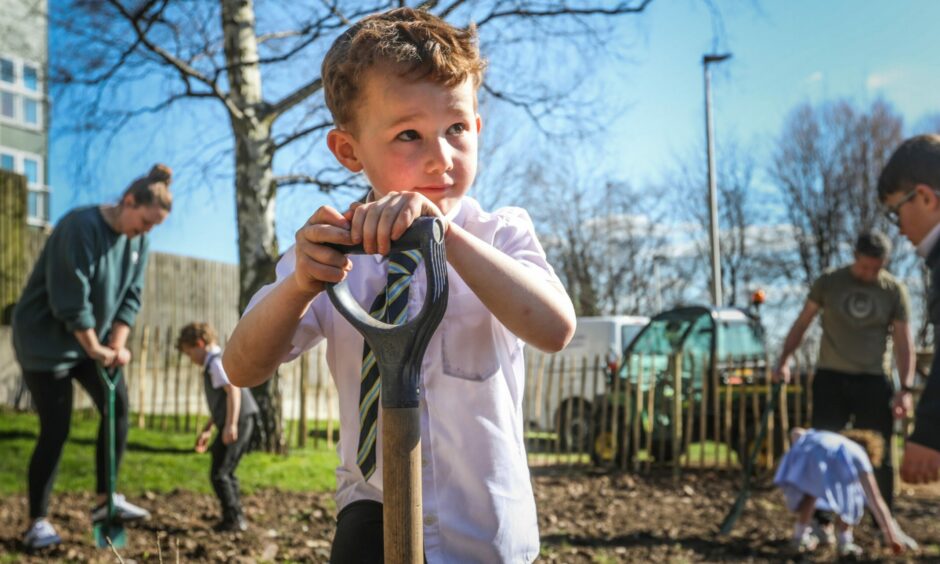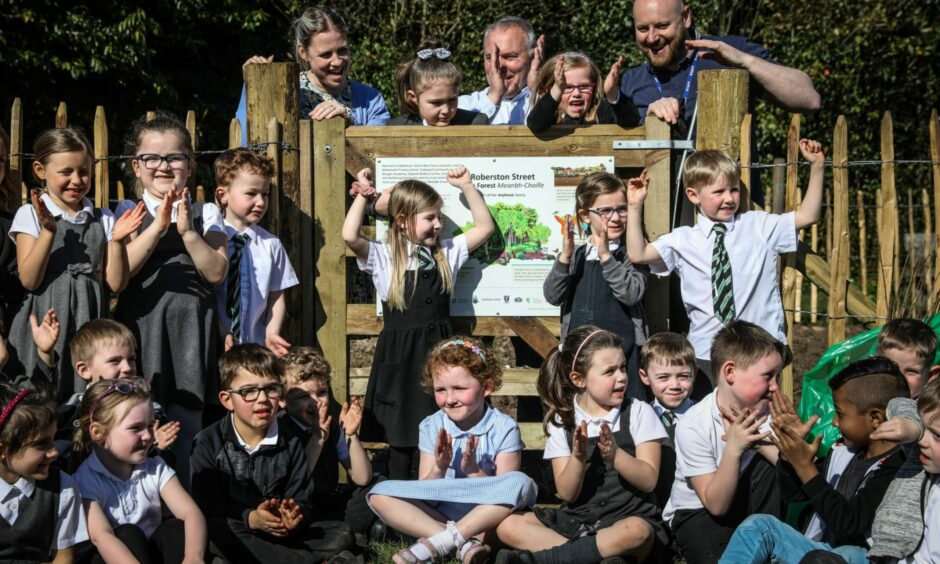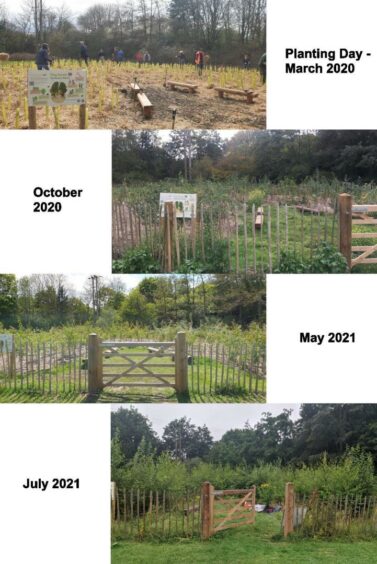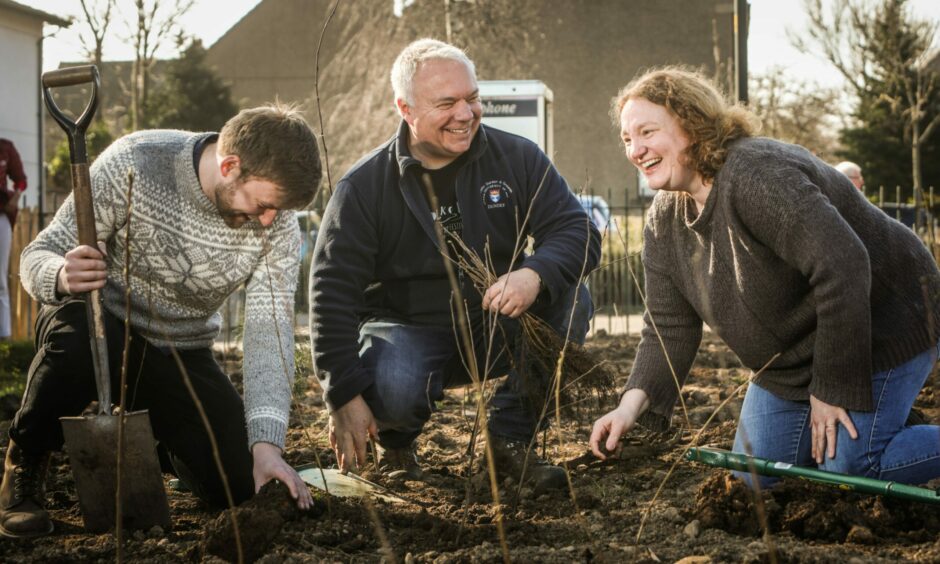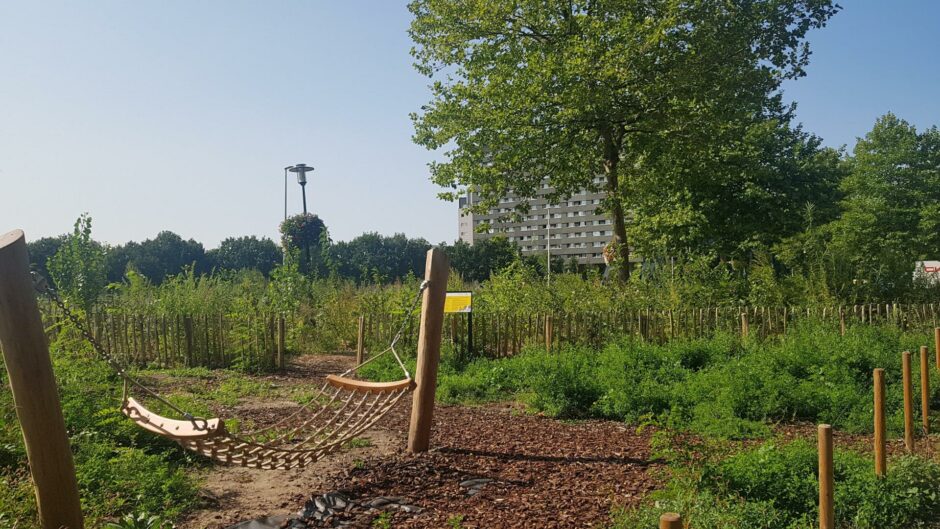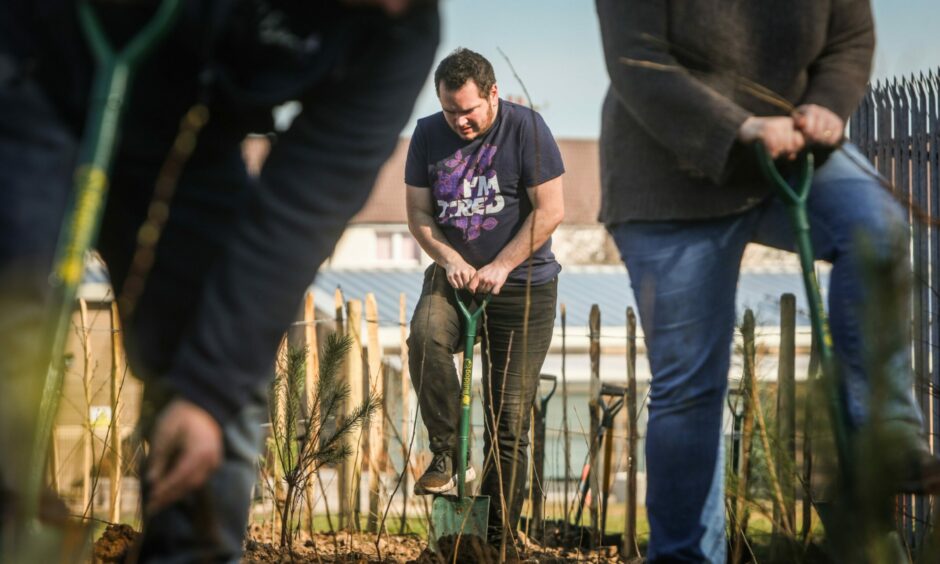They may be dubbed ‘Wee Forests’ but green experts hope they will have a big impact on Dundee.
Known outside of Scotland as “tiny forests”, the practice sees hundreds of trees planted in a small area.
As well as boosting biodiversity in urban environments, Wee Forests also help cool city temperatures and offer mental health benefits.
The project was brought to the City of Discovery through a collaboration with Dundee University, NatureScot and charity Earthwatch Europe.
Kevin Frediani, who runs the university’s botanic gardens, was on hand to officially open the Robertson Street and Balunie Avenue sites last weekend.
Tiny Forests are super tiny, but super powerful urban forests. They are an oasis for plants, insects, birds and small mammals, help to mitigate the impacts of climate change, and they support people’s wellbeing too!
Get in touch TODAY and reap the benefits throughout 2021 🌲🌳 pic.twitter.com/UIIooNVT29— Earthwatch Europe (@Earthwatch_Eur) November 27, 2020
Volunteers – including children from Glebelands Primary School – helped Kevin and his team plant hundreds of trees at the launch.
The trees are just saplings at this point.
But we spoke to Earthwatch’s Ben Williams – who has been involved in introducing dozens of tiny forests to cities across the UK – to learn what the green spaces will offer Dundonians in time.
What benefits can Wee Forests bring to Dundee?
With climate change causing rising temperatures in parts of the world, concrete-rich cities are likely to feel the heat.
Peer-reviewed research shows that Wee Forests and other intensive green spaces are on average 1.2C cooler than their greyer surroundings.
They are popping up in cities across Europe and further afield.
Ben Williams is senior project manager at Earthwatch Europe.
He has led dozens of tiny forests projects the UK, including Whitney, Oxfordshire just before the country first went into lockdown and, more recently, Blackpool.
As many as 600 trees are grown in a roughly 200 square metres zone. In a few years a rich, biodiverse green space should be thriving.
Is it all that simple?
There are challenges to creating Wee Forests that Ben and his team have to be cognisant of.
He said: “It’s important that this isn’t just something we do to people and then set off into the sunset.
“We want to bring the community along with us. After all, they are the ones that know the area and will be living with the tiny forests.”
The intensive nature of the scheme means costs can run higher than usual for tree planting, with price tags reaching between £20k-£30k.
“There are cheaper ways of getting trees into the ground,” Ben remarked.
Keeping you cool
But when it all comes together, Ben says it can bring a lot of positives to urban environments.
“It helps with thermal comfort, biodiversity, mental health and carbon capture.”
They can also help give people’s mental health a boost, he said. The need for this in urban settings was brought into sharp focus when the coronavirus pandemic surged across the globe.
Ben added: “Without getting all Joni Mitchell, nature is something that people weirdly get in the car and travel to.
“But this is putting a natural environment in places where people live.
“There’s a strong correlation between deprivation and lack of access to quality green spaces.”
Kevin Frediani from Dundee University’s botanic gardens agrees.
He hopes the Dundee Wee Forests will be the first of many in the city.
He said: “Having them dotted all over the city will make nature accessible for all.
“We’ve really seen the importance of nature and outdoor spaces during lockdown, both for physical and mental health.”
Where does the idea of Wee Forests come from?
The mastermind is Japanese horticulturalist Akira Miyawaki, who developed the idea in the 1970s.
He was seemingly ahead of his time. Miyawaki’s initial forays were at shrines as opposed to urban environments and went largely unnoticed.
That is until Shubhendu Sharma introduced tiny forests into some of India’s most densely-populated cities in the past decade.
From there the idea spread to Europe, thanks to organisations such as Earthwatch.
The Netherlands is among the biggest adopters of the practice in Europe.
Utrecht University is behind one in the city.
The picture above is a taster of how Dundee’s Wee Forests could develop.
But not everyone loves the style of tree planting, which Ben described as the “marmite” of the horticultural world.
He added: “The approach sort of flies in the face of conventional tree planting, which is very minimalist with a ‘leave no trace’ approach.
“Whereas the tiny forest approach is more interventionist.
“We’re quite aware we’re not creating a natural environment, but a depiction of one.”
